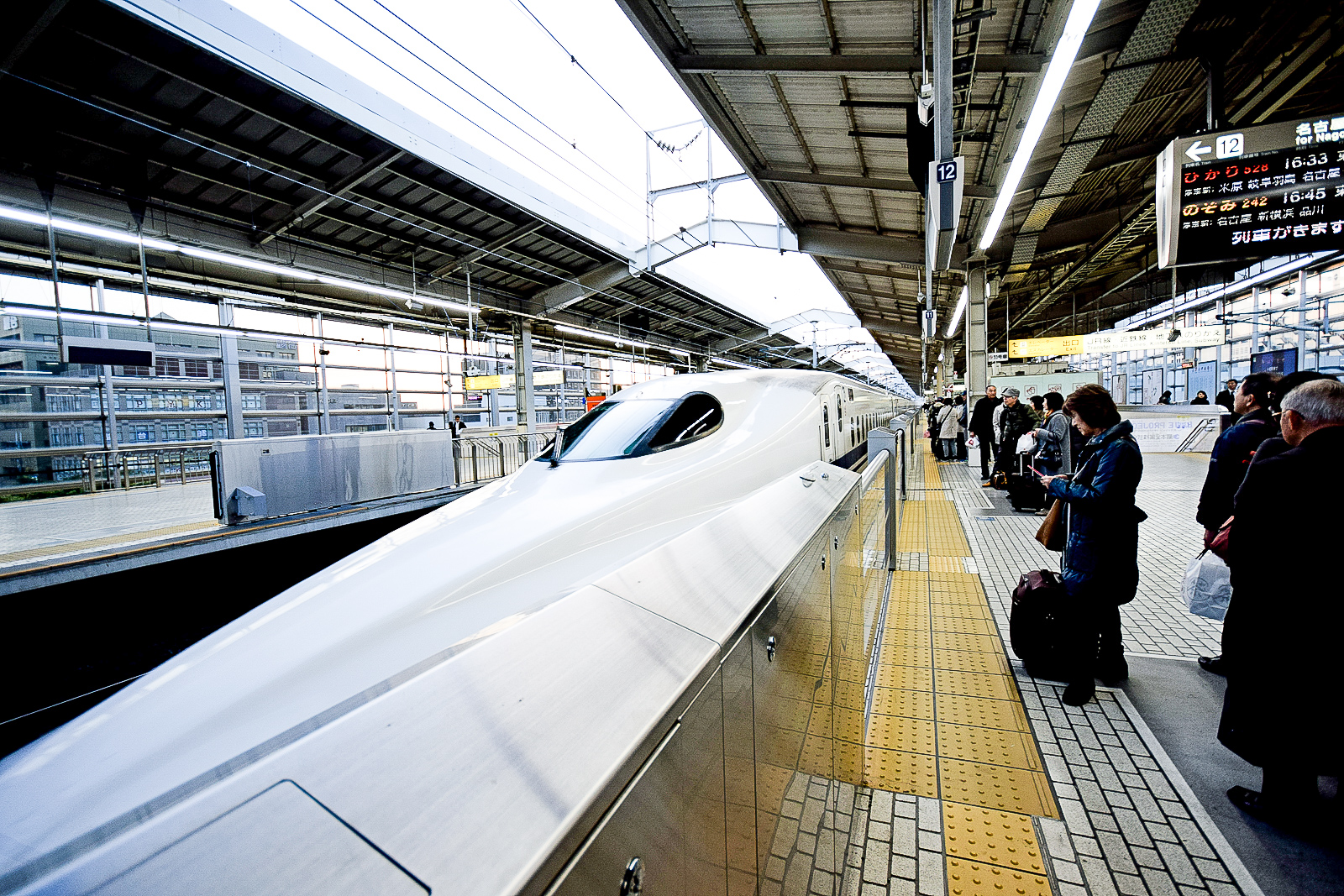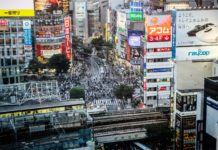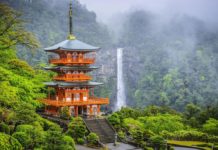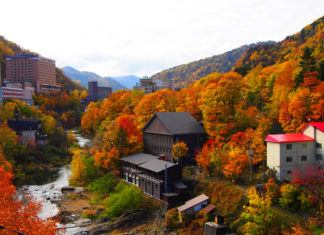Cast in a lightweight, airtight aluminium body, the sleek, curvilinear, space-age structure that elongates, then protrude to needle-nose points on either side, could easily resemble a jet plane in its full aerodynamic glory. A remarkable engineering and design triumph, the Shinkansen is Japan’s bullet train and a national cultural symbol. This revolutionary passenger rail system can chalk up speeds of up to a staggering 320 km/hr. It is so fast it scythes a layer of ballast from the track, which gets replaced daily. Over 20,000 volts of electricity charges through this beastly mechanical snake, as it glides effortlessly on larger, standard gauges. As one of the more expensive and divinely comfortable modes to get around the country, it is also the quickest and most convenient, popular among both the locals and visitors. Many even seemed keener to board onto a Shinkansen than booking a cheaper flight. Every traveler settles with one of two options, whether single tickets or special train passes.
The Japan Rail Pass or JR Pass, the closest there is to a “universal” access, is economical and perfect for novices or first-time travelers. If your travel itinerary calls for trips to more than one city in a week, the sheer savings via a JR Pass can be sobering. These passes are only available to travel visa-holders in 7, 14 or 21-day categories. It covers unlimited rides on all Japan Rail’s bullet trains, except for Nozomi and Mizuho, which are the names of the two fastest Shinkansen. In addition, also expect full access to all normal trains, subways and buses. Getting a JR Pass cannot be easier. Just place an order online before you arrive, then retrieve your pass at any major train stations. On the other hand, Shinkansen tickets can be purchase directly at the station’s ticket office at Midori no Madoguchi or from a handful of ticket vending machines. You can also visit the online ticket reservation service, where you might encounter the occasional online deals and discounts. While reserving tickets online offers convenience, the actual tickets are still issued by the ticket office. Needless to say, you will need to collect your reserved tickets there first before setting off.
Launched just days before the 1964 Olympics, the first Shinkansen served the Tokyo-Osaka route, almost halving the travel times of standard trains, from over 6 hours, down to just 3 hours and 10 minutes. It was heralded as a public transport miracle and it re-asserted Japanese economic standing. Today, its rail line spans 2,600 km, transporting over 5 billion passengers, with more than 150 million trips taken in a year. It interlinks all major hubs and cities in the country, from Hakodate in the north, to Kagoshima in the south, with the exception of Okinawa and Shikoku. The rail lines also stretch out to some of the most rugged terrains in the country. A Shinkansen ride is a journey amid a natural spectacle of inter-changing landscapes and stunning vistas, from coastal beaches and seafronts, down to the sun-soaked meadows, then to snow-capped mountains, and back to the imposing cityscape and urban orderliness of commercial Japan.
With delays averaging in just 30 seconds annually, the Shinkansen earned plaudits for its exceptional punctuality, reflecting the full Japanese propriety.

Its impeccable safety record of zero fatalities is another gold standard. Even as all Shinkansen seats are tailored for comfort, fully reclinable and adjustable, each with spacious legroom, there are classes of seats that promises a different experience. It starts from Ordinary, Green to Gran and are comparable to the airline’s economy, business and first class seats. As you ascend the classes, the foot spaces grow and for Gran passengers, grand luxuriating facilities and services lay awaits. There are also reserved and non-reserved seats in different cars. A seat can be reserved up to a month before a journey, and until a short period before the train departs. All Green class seats are of full-reserved, as with the seats on the Hayabusa, Hayate and Komachi trains along the Tohoku Shinkansen route.
Then of course, there is the food. It would be an utter travesty to live your Shinkansen experience without appraising the delights of the specially prepared local train bento, Eki Bento or Ekiben. It’s probably the only few places in the country where the usual refrain from public eating can be ignored. This healthy meal box is available onboard the train, often in delightful, enticing colours and decorations are set atop a food cart and periodically wheeled up and down the aisle. There also stocks of beverages and snacks such as katsu, a fried pork sandwich, instant noodles, potato chips and nuts. Vending machines for the hungry pangs, offer a bit more choice.
However, explore the shops at the train stations if your palette is lured by more exotic, daring selections. In fact, it comes highly recommended. You can also take a chance with picking out your own combo at the lively food kiosks along the platform, then be entertained as you wait and watch while it is expertly prepared for you. These portable lunch boxes definitely add another layer of intrigue and interest in localised flavours. It fetes each region in bite-sized morsels, and features the freshest in local ingredients and produce.
One such Ekiben, Makunouchi Bento, contains white rice and different kinds of little side dishes like fried egg, Kamaboko or cured surimi, grilled fish or chicken, fruits, vegetables and local specialities. At the Obihiro station in the northern island of Hokkaido, the Ekiben celebrates indigenous salmon, potatoes and corn as local favourites. If you prefer to chomp on as many varieties in one sitting, there is the “matsuri” shop, Inside the JR Tokyo Station. Here, each Bento is artfully crafted, delicately packed, and drawing culinary inspirations from all over Japan. With a motherlode of 170 types to choose from, you can be sure to leave feeling properly Bento-fied and all fired-up for the next leg of your journey.
As much as it is a novelty for visitors, a line in a bucket list to be crossed off, riding on a Shinkansen is more than that; an indivisible part of experiencing Japan. It captures the authenticity and riveting vitality of Japan on a ground level unique only to it, then magnifies the experience with its remarkable speed, convenience, reliability and comfort. A hi-tech public transportation marvel, Shinkansen is truly the best window into Japan.










